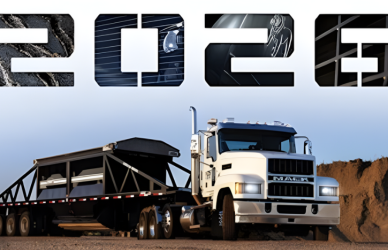In order for hydrogen fuel cell technology to truly take off as a popular and practical power source for electric vehicles, one major obstacle must be overcome: the high cost.
When it comes to hydrogen-powered trucks and other vehicles, it’s not the price tag of the vehicles themselves that is holding them back. Rather, it’s the cost of the hydrogen fuel. In California, for example, the average price for a kilogram of hydrogen is around $25. This means that filling up a standard car would cost approximately $135.
“That is not really price competitive,” said Thiemo Schalk, a representative for the government and external affairs division for BMW of North America, during a panel at the California Hydrogen Leadership Summit in June.
“If we don’t get the hydrogen price down, [even] if we give free trucks away, people will not start using it because it doesn’t make any sense for them,” agreed Rick Breunesse, business development director at Symbio North America, maker of light and heavy-duty hydrogen vehicle technology.
According to Pat Griffin, president of North America at Hyzon Motors, the cost of hydrogen fuel should be around $10 per kilo. Hyzon Motors specializes in manufacturing heavy-duty vehicles that run on hydrogen power.
“[Fleet customers] say, ‘I can bear that today. When can I get to $6?’ And that seems to be the next number I’m hearing,” he added.
Hydrogen is gaining recognition as the most practical fuel choice for heavy-duty vehicles that aim to have zero emissions, such as freight trucks, locomotives, and ships. This development is particularly significant as states like California require the conversion of trucking and fleets to vehicles with zero emissions.
One major advantage of hydrogen power over battery-electric power is its ability to enable longer ranges, while also reducing the overall weight of the vehicles as they are not burdened with heavy batteries. For this technology to become widespread, however, there is a need for increased hydrogen production and the establishment of an infrastructure network that includes fuel storage and refueling stations. This has been highlighted by experts in the industry.
“What we’ve seen here today, with a lot of the infrastructure efforts going on, is really encouraging, and it can’t come soon enough,” said Griffin.
“If we wait for the volume of trucks to be in place before we invest in our infrastructure, it’s too late. It’s not going to succeed, and we’ll all fail. So they have to be coming together simultaneously,” he added.
California state Sen. Bob Archuleta, representing areas of Los Angeles and Orange counties, emphasizes the importance of incentives for promoting the adoption of infrastructure and vehicles in the market.
“These incentives can stimulate research and development, infrastructure expansion, and the deployment of clean hydrogen technology,” Archuleta said.
Source: Transport Topics











